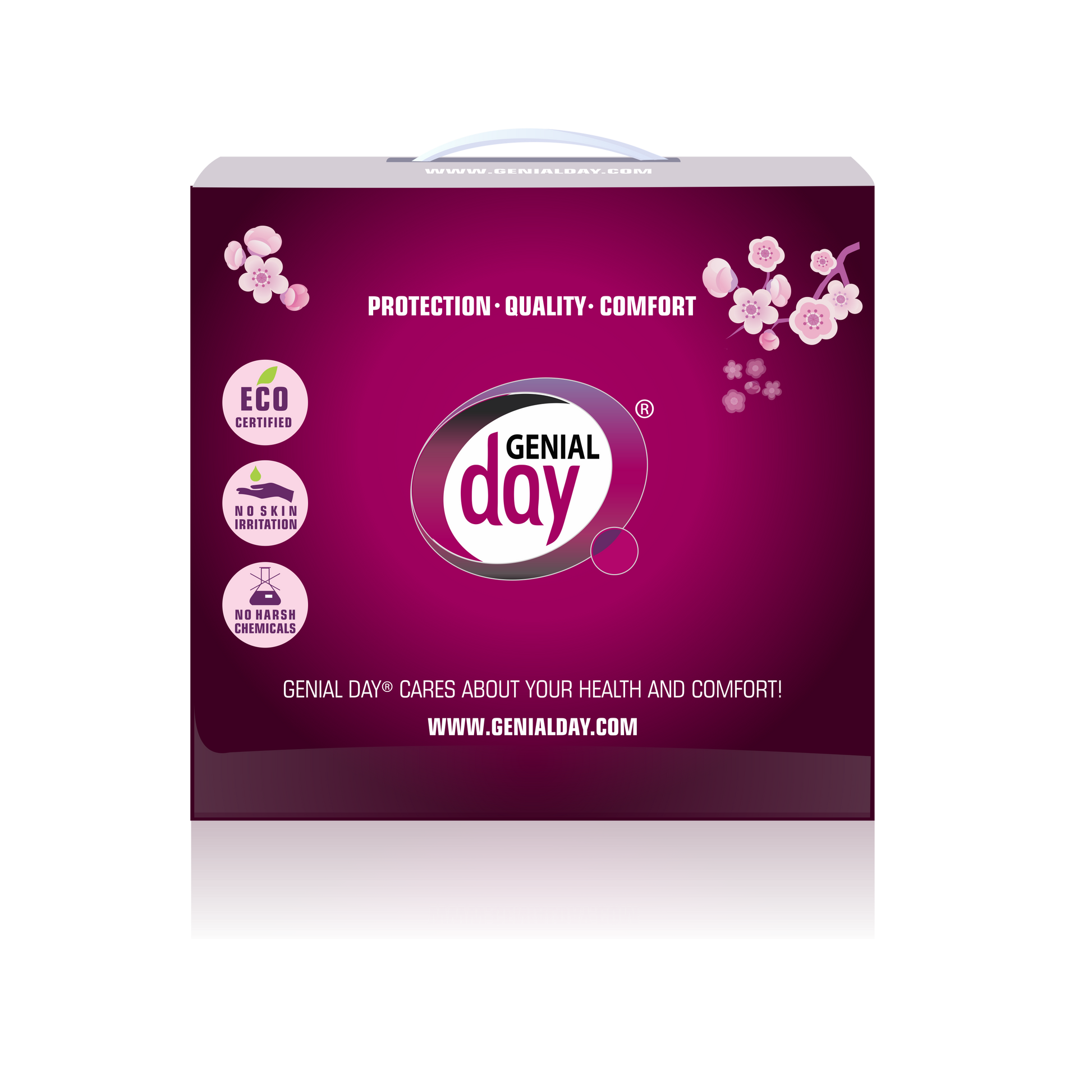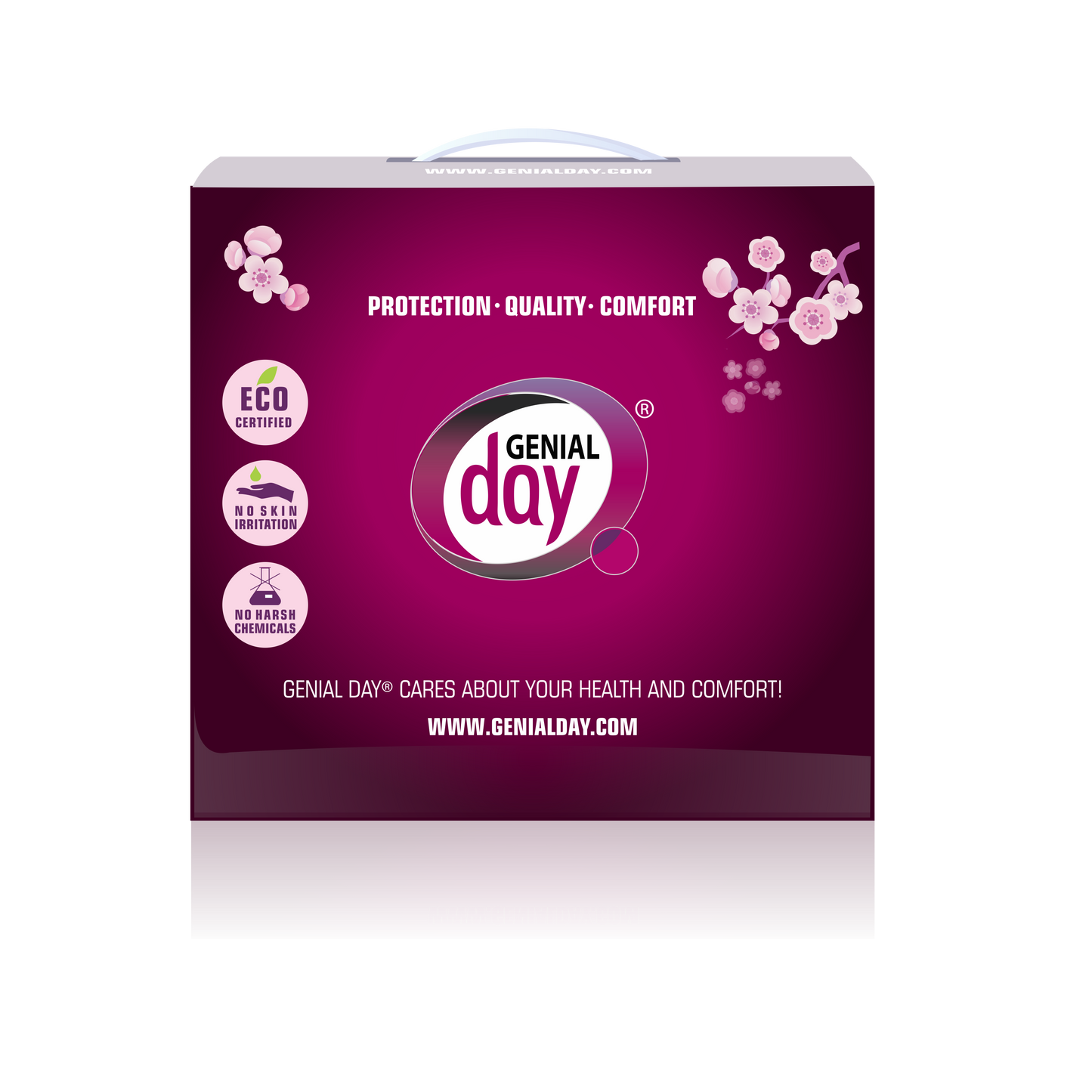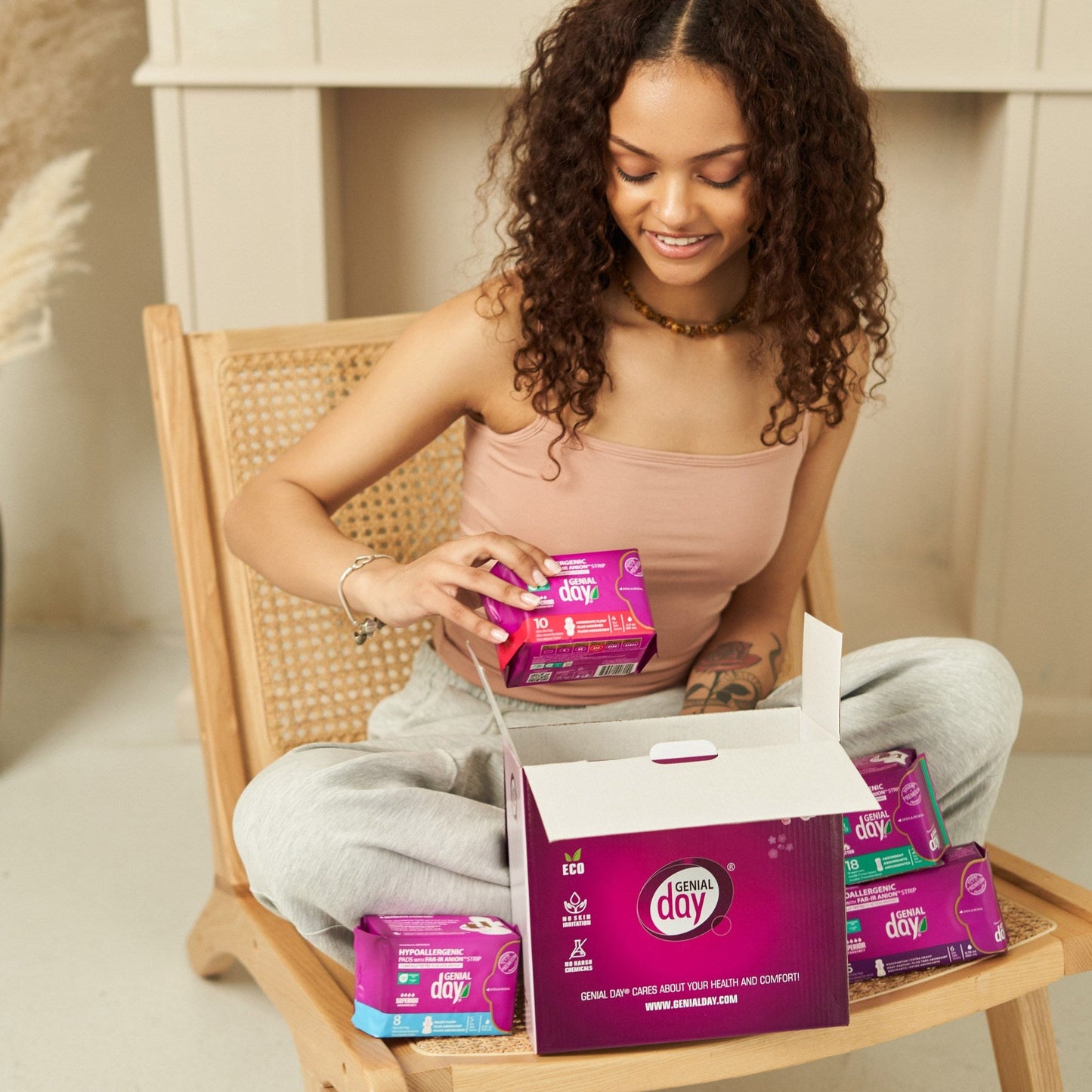Many women know how uncomfortable a vaginal yeast infection can be, especially if you have a chronic condition. Some blame intimate hygiene habits or food, but not that many know that a vaginal yeast infection can occur or worsen due to hormonal changes in your body. But let’s see how the condition occurs in the first place.
How do you get a vaginal yeast infection?
A healthy vagina contains good bacteria that help clean the vagina and keep yeast and other fungi at bay. However, hormonal or pH changes in the vagina can cause an overgrowth of harmful bacteria and fungus known as candida. When candida or yeast multiply, a person might experience itching, swelling, and abnormal discharge in the vaginal area. Although irritating and uncomfortable, it’s a common condition that can be easily treated with natural or over-the-counter (OTC) medicine.
It’s worth mentioning that a vaginal yeast infection is only one of the ways candida can infect you. This fungus lives everywhere in our bodies and is responsible for candidiasis in the mouth or throat, as well as conditions such as jock itch, athlete’s foot, or nail fungus. Candida proliferates in a warm and moist environment when the healthy bacterial count changes. The growth of fungi or pH changes is only a result of the inner body’s processes, one of which can be hormonal imbalances.
Causes and symptoms of a vaginal yeast infection
Naturally, the vagina’s pH level is between 3.8 and 4.5, meaning it’s acidic. Good bacteria such as lactobacilli keep vaginal pH balanced and prevent the spread of harmful bacteria and yeast. However, even the strongest natural protective shield sometimes can’t withstand hormonal imbalances, excessive cleaning, and scented products. It washes away good bacteria and can result in the overgrowth of the candida fungus. It’s also worth mentioning that a disrupted gut microbiome can cause changes in the vaginal microbiome, too. The two populations of bacteria are connected.
Symptoms of a vaginal yeast infection:
- Changes in vaginal discharge - yeast infection discharge is often compared to cottage cheese, as it is white and clumpy;
- Itching and vaginal dryness;
- Burning and painful sensation while urinating or having vaginal intercourse;
- Swelling around the vagina.
However, not only poor or excessive intimate hygiene habits contribute to yeast overgrowth, it can be anything from food sensitivities, sexual intercourse to hormonal imbalances, and the use of antibiotics. In this article, I want to explore how female sex hormones contribute to vaginal health.
Vaginal yeast infection and hormonal imbalance
To talk about hormonal imbalances, we need to understand how female sex hormones work. There are three main female sex hormones: estrogen, progesterone, and androgens (male sex hormones). They are sensors responsible for dozens of functions in your body, from puberty and childbirth to metabolism. Yet too often, women lack one of the hormones or have a dominance of another.
Such hormonal fluctuations can cause chronic vaginal yeast infections. Estrogen dominance is more common as people these days are exposed to tons of synthetic estrogens. Anything from plastic waste and chemical pollution where you live to your food and cosmetics can contribute to the endocrine system irregularities.
Scientists have noticed a correlation between increased estrogen levels and the overgrowth of candida. Drastically decreased estrogen levels can also create favorable conditions for fungus to reproduce. Premenopausal women are at higher risks of getting candidiasis due to vaginal dryness and vaginal pH changes. The same goes for hormonal birth control users because one of the side effects of hormonal contraception is vaginal dryness and disrupted natural hormonal cycles.
When it comes to progesterone, some researchers found that it reduces the proliferation of candida and suppresses its genes. However, often, people have low progesterone and estrogen dominance, making it more challenging to get all the progesterone benefits.
But how do you treat hormonal imbalance induced vaginal yeast infection? Let’s see what the possible cures and treatments for the condition are.
Vaginal yeast infection treatment
Find the reason
To find what causes bad bacteria and fungi to flare up, you should consider visiting a doctor’s office. While a vaginal yeast infection can happen once in a while and be easily treated with basic remedies, it has similar symptoms to sexually transmitted infections (STIs). Therefore you shouldn’t ignore these symptoms and better check in with your doctor. Often, it’s just your body’s reaction to some minor changes, such as antibiotic use, but if you have a chronic condition, there should be a reason behind it.
Your gynecologist might ask about your health history, perform a pelvic exam, or take a vaginal smear test. If the infection recurs, you should ask them to examine your hormone levels to see if the reason is hormonal imbalances.
You can prepare for the doctor’s appointment beforehand. Here’s a list that can help identify the reason behind a chronic vaginal yeast infection:
- Track your cycle and reoccurring yeast infections on a calendar to bring it to the doctor’s appointment.
- Look for a pattern, does a yeast infection always start at the same time of your menstrual cycle?
- Do you get a yeast infection after your period? If so, the culprit might be wrong period products. Many women claim Genial Day sanitary napkins help them alleviate discomfort and reduce irritation.
- Do you get a yeast infection after vaginal intercourse?
- Do you get a yeast infection mostly in the wintertime or when you get cold?
- Did you start getting it after you started using hormonal contraception?
- Do your current intimate hygiene habits and products increase irritation?
- Analyze your diet - have you recently changed your eating habits or increased sugar intake? Yeast feeds off of sugar and white flour products.
Natural remedies and over-the-counter medicine
The fastest way to treat a vaginal yeast infection is by applying antifungal cream, ointment, tablets, or suppositories. Usually, you don’t even need a prescription to get this medicine; however, your doctor will recommend the best option.
Common medications and active ingredients include:
- Butoconazole
- Clotrimazole
- Miconazole
- Terconazole
- Fluconazole
In severe cases, when the infection spreads or can’t be cured with OTC drugs, your doctor can prescribe stronger creams, ointments, tablets, or vaginal suppository treatments. If nothing helps, and you have no other root causes, you should check in with your sexual partners to see if they don’t have the infection. Little-known but men can also get a penile yeast infection and spread it to their partners.
You can also incorporate more good bacteria into your diet to speed up the treatment or use it as a preventive measure. Lara Briden in her book Period Repair Manual recommends supplements with probiotic strains Lactobacillus rhamnosus, GR-1 and Lactobacillus reuteri, RC-14 which have clinically proven to improve yeast and bacterial vaginosis. The probiotic combination works when taken orally, but you can also insert it vaginally for additional benefit.
Prevention of a vaginal yeast infection
You can take basic measures to prevent a vaginal yeast infection, such as wearing breathable and natural-fabric underwear, avoiding douching or excessively cleaning your vagina, increasing good bacteria while taking antibiotics.
If the reason is hormonal imbalances, you should try to find the cause and balance them. One of the ways to help regulate hormones is to clean your environment from chemical and plastic pollution, choose organic produce, and nourish your body with all the necessary vitamins and minerals.
Stress can be a culprit for hormonal imbalances and suppressed ovulation (leading to low progesterone). What you can do is to eat regularly, avoid stressful situations and environment, sleep enough hours, and find ways to unwind and relax. Our bodies always show when something is off, so you have to make sure it feels safe to run natural processes and restore suppressed hormones.
If you’ve noticed that you tend to get a vaginal yeast infection around the time of your period, it can be both changes in hormones and poor menstrual hygiene product quality. I recommend using skin-friendly, natural, and breathable products to reduce your risks of getting the infection. Genial Day period care products are designed to prevent discomfort, skin irritations, and allergies during your period. Our products are toxin-free, unscented, heavy metals-free, chlorine-free, and pH-balanced reducing your risks of getting a vaginal yeast infection.
READ MORE: STOPPED OR MISSED PERIODS: HOW CAN YOU REGAIN YOUR NATURAL CYCLE?
Vaginal yeast infection can make your life miserable. From itching to swelling and pain, it can be unbearable. To prevent the growth of candida and maintain good bacteria, always use organic and tested products, wash your vulva every day, but avoid using harsh products or cleaning inside the vagina. After all, your body knows how to clean itself. And for better menstrual hygiene care, visit Genial Day online shop to learn more about the benefits of hypoallergenic and organic-certified period products for your personal health.




